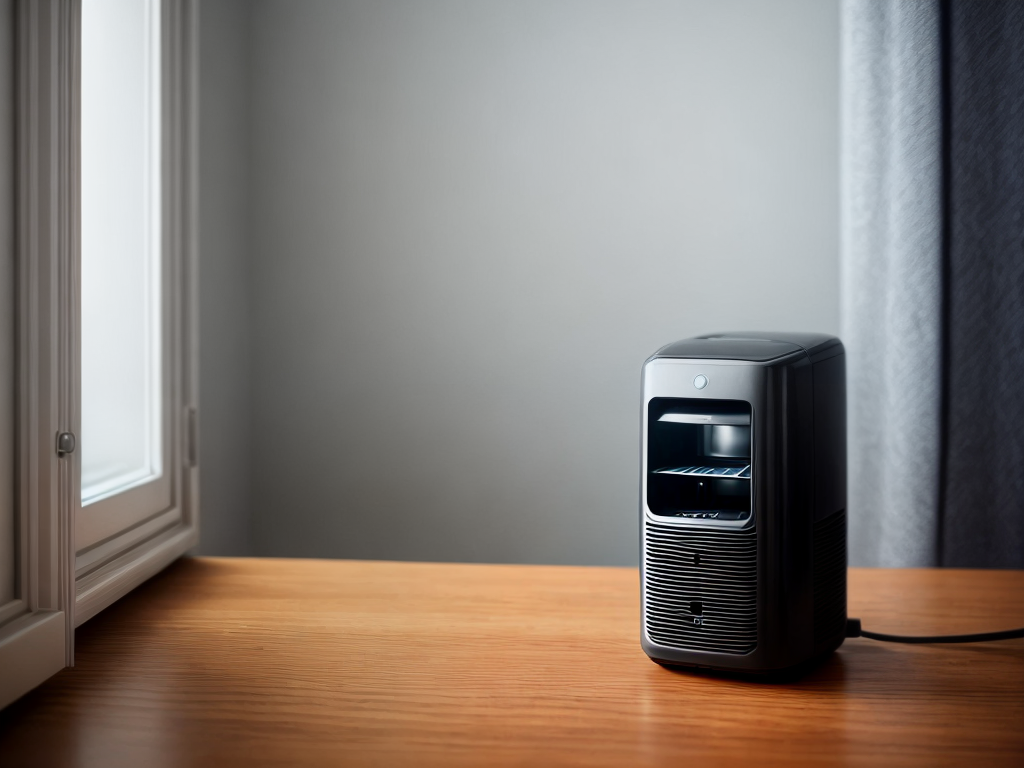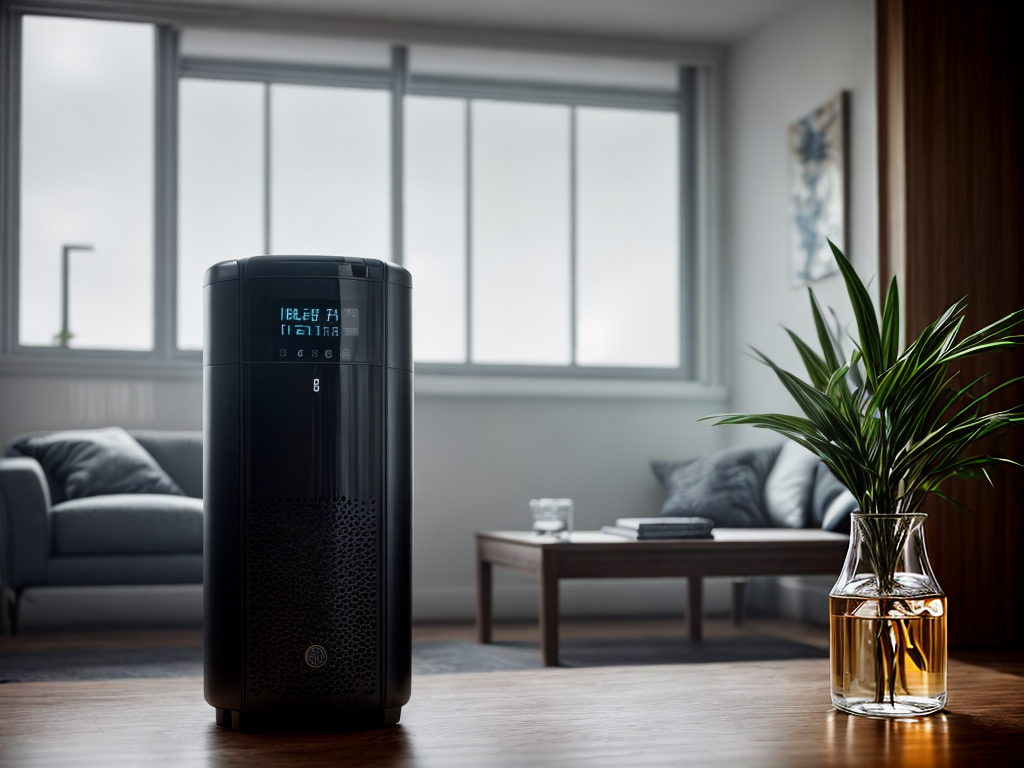
They say that all good things must come to an end, and unfortunately, that applies to our trusty dehumidifiers as well. Like a storm cloud on the horizon, there comes a time when we must decide whether to repair or replace our faithful moisture-eliminating companion. But how do we know when it’s time to bid farewell to the old and welcome the new? Well, my fellow humidity warriors, in this discussion, I will shed light on the telltale signs that indicate your dehumidifier may be in need of some tender loving care or a well-deserved retirement. So, gather ’round, and let’s uncover the secrets to knowing when it’s time to make that crucial decision.
Strange Noises
When my dehumidifier started making strange noises, I knew it was time to investigate and determine the cause. As someone who values control over my appliances, it’s essential to address any issues promptly. In this troubleshooting guide, I will provide maintenance tips for dealing with strange noises coming from your dehumidifier.
First, make sure the dehumidifier is placed on a level surface. Uneven surfaces can lead to vibrations and rattling noises. If that doesn’t solve the problem, check the fan blades for any debris or obstructions. Dust, dirt, or loose parts can cause the fan to make unusual sounds. Clean the blades carefully and tighten any loose screws if necessary.
Next, inspect the compressor for any signs of damage or wear. A faulty compressor can produce loud banging or clanking noises. If you notice any issues, it’s best to contact a professional technician to assess the situation and determine if a repair or replacement is needed.
Regular maintenance is crucial to prevent strange noises from occurring. Clean or replace the air filter as recommended by the manufacturer to ensure proper airflow. Additionally, check the drainage system and empty the water tank regularly to avoid any blockages or overflows.
Excessive Energy Consumption
I’ve noticed that my dehumidifier has been using a lot more electricity lately. It seems like the energy consumption has increased significantly, which is concerning. I need to address this issue and find a solution to reduce the power consumption and save on my electricity bill.
High Electricity Usage
Excessive energy consumption is a common issue that can occur with dehumidifiers. High electricity usage not only drives up your energy bills but also puts unnecessary strain on the environment. To address this concern, I have compiled a list of energy-saving tips and highlighted the benefits of energy-efficient models in the table below:
| Energy-Saving Tips | Energy-Efficient Models |
|---|---|
| Set the humidity level to the lowest comfortable setting | Look for dehumidifiers with the Energy Star label |
| Use a timer to control when the dehumidifier is on | Opt for models with adjustable fan speeds |
| Keep doors and windows closed to prevent moisture from entering | Consider dehumidifiers with built-in sensors to automatically adjust settings |
| Regularly clean and maintain your dehumidifier for optimal efficiency | Look for models with a high Energy Efficiency Ratio (EER) |
Excessive Energy Consumption
To address the issue of excessive energy consumption, we can take steps to reduce the electricity usage of your dehumidifier. One effective way is to consider investing in energy efficient models. These dehumidifiers are designed to use less electricity while still effectively removing excess moisture from the air. By upgrading to an energy efficient model, you can significantly reduce your energy consumption and lower your electricity bills. Not only does this benefit your wallet, but it also has a positive environmental impact. Energy efficient dehumidifiers consume less electricity, which means less fossil fuel is burned to generate that electricity, resulting in a reduction in greenhouse gas emissions. So, when it comes to excessive energy consumption, choosing energy efficient models can help you gain control over your energy usage while minimizing your environmental footprint.
Increased Power Consumption
When tackling the issue of excessive energy consumption, one effective step to take is to address the increased power consumption of your dehumidifier. Ensuring that your dehumidifier operates with optimal energy efficiency is crucial in reducing your electricity bills. Here are some maintenance tips to help you maintain the energy efficiency of your dehumidifier:
| Maintenance Tips | Benefits |
|---|---|
| Clean the air filter regularly | Improves airflow and reduces strain on the motor |
| Inspect and clean the coils | Enhances heat transfer and improves overall performance |
| Check for leaks in the system | Prevents energy wastage and ensures efficient operation |
| Keep the dehumidifier in a cool room | Reduces the workload on the compressor and saves energy |
Poor Performance
When it comes to poor performance in your dehumidifier, there are two main signs to look out for: signs of wear and high energy consumption. Signs of wear may include a decrease in the dehumidifier’s ability to remove moisture from the air or the unit not running as efficiently as it used to. High energy consumption can also be a red flag, as it may indicate that the dehumidifier is working harder than it should to achieve the desired humidity levels.
Signs of Wear
If your dehumidifier is not working as effectively as it used to, it may be showing signs of wear and poor performance. When faced with this situation, it’s important to evaluate whether a repair or replacement is the best course of action. Before making a decision, consider some maintenance tips that can help improve the performance of your dehumidifier. First, clean or replace the air filter regularly to ensure proper airflow. Second, check the drainage system for any clogs or leaks. Third, inspect the coils for any signs of dirt or debris buildup. Finally, make sure the humidity setting is properly adjusted. By following these maintenance tips, you may be able to restore your dehumidifier’s performance and avoid the need for a costly replacement.
High Energy Consumption
After evaluating the signs of wear on your dehumidifier, it is important to address the issue of high energy consumption, which can result in poor performance. To help you regain control over your energy consumption and optimize the performance of your dehumidifier, here are some energy saving tips and maintenance tips:
-
Energy saving tips:
-
Set the dehumidifier to a lower humidity level to reduce its running time and energy usage.
-
Place the dehumidifier in a well-insulated room to prevent energy loss and maximize its efficiency.
-
Maintenance tips:
-
Clean or replace the air filter regularly to ensure proper airflow and reduce strain on the unit.
-
Schedule professional maintenance to inspect and clean internal components, preventing any energy wastage caused by inefficiencies.
Water Leakage
I often find that water leakage is a common issue when dealing with dehumidifiers. This can be a frustrating problem, as it not only affects the performance of the dehumidifier but also poses a risk of damaging your floors, walls, or furniture. When it comes to moisture control and mold prevention, it is crucial to address water leakage promptly.
To help you better understand the causes and solutions for water leakage in dehumidifiers, I have created the following table:
| Causes | Solutions |
|---|---|
| Clogged or frozen condensate drain | Clean or thaw the drain pipe |
| Improper installation or leveling | Reinstall or level the dehumidifier |
| Cracked or damaged water tank | Replace the water tank or repair if possible |
| Faulty float switch or sensor | Replace the switch or sensor |
| Excessive humidity in the room | Adjust the humidity settings or use a larger capacity dehumidifier |
Frequent Cycling
Dealing with frequent cycling can be another frustrating issue when it comes to maintaining the performance and efficiency of your dehumidifier. If you find that your dehumidifier is turning on and off too frequently, there are a few troubleshooting tips you can follow to address this problem and keep your dehumidifier running smoothly.
Here is a maintenance checklist to help you troubleshoot and resolve the issue of frequent cycling:
-
Check the humidity level: Ensure that the humidity level in the room is not too high. If it is, adjust the settings on your dehumidifier accordingly.
-
Clean the air filter: A clogged air filter can cause your dehumidifier to cycle more frequently. Regularly clean or replace the air filter to improve airflow and prevent excessive cycling.
-
Check for obstructions: Make sure that there are no obstructions blocking the air intake or the exhaust vents of your dehumidifier. Clear any debris or objects that may be hindering the proper functioning of the unit.
-
Check the positioning: Ensure that your dehumidifier is placed in an appropriate location where there is proper air circulation. Avoid placing it near heat sources or in direct sunlight, as this can cause it to cycle more frequently.
Malfunctioning Controls
If your dehumidifier is experiencing malfunctioning controls, troubleshooting and resolving the issue is essential for optimal performance. When the controls on your dehumidifier stop functioning properly, it can be frustrating and hinder your ability to control the humidity levels in your space. However, before considering repair options or replacing your dehumidifier, there are troubleshooting techniques you can try to fix the problem.
Start by checking the power source and making sure the dehumidifier is properly plugged in. Sometimes, a loose or faulty connection can cause the controls to malfunction. If the power source is not the issue, try resetting the controls by turning off the dehumidifier, unplugging it, and waiting for a few minutes before plugging it back in and turning it on again.
If these steps do not solve the problem, consult the user manual or manufacturer’s website for further troubleshooting instructions. Many manufacturers provide helpful resources online, including FAQs and troubleshooting guides specific to your dehumidifier model.
If all else fails, it may be time to consider repair options or replacing your dehumidifier. Contact the manufacturer or a professional technician to assess the issue and determine the best course of action. Remember to weigh the cost of repairs against the price of a new dehumidifier to make an informed decision.
Age and Lifespan
The age and lifespan of a dehumidifier play a significant role in determining its overall effectiveness and longevity. As an appliance gets older, it may start to experience more frequent breakdowns and require additional repairs. Here are some factors to consider when deciding whether to repair or replace a dehumidifier based on its age and lifespan:
-
Repair vs Replace:
-
If your dehumidifier is relatively young and experiencing minor issues, it may be more cost-effective to repair it. However, if it’s nearing the end of its lifespan and requiring frequent repairs, it may be wise to consider replacing it.
-
Consider the cost of repairs versus the cost of a new dehumidifier. Sometimes, investing in a new unit can save you money in the long run.
-
Maintenance Tips:
-
Regular maintenance can help extend the lifespan of your dehumidifier. Clean the filter regularly to ensure efficient operation and prevent clogs.
-
Check the coils for any signs of frost or ice buildup. If you notice any issues, consult the manufacturer’s instructions for proper maintenance or seek professional help.







